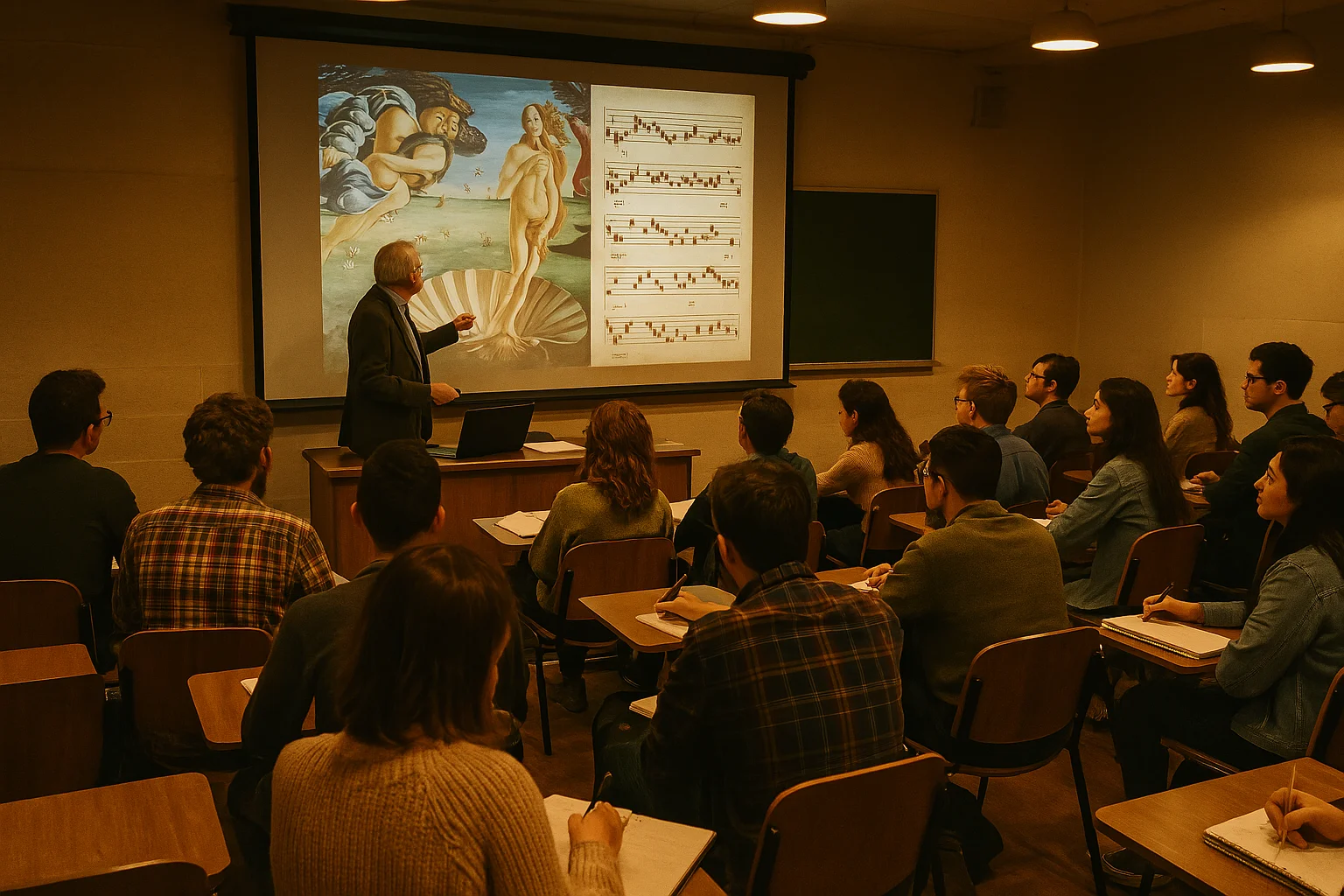In the vast realm of art history, one might wonder, do you study music in art history? This intriguing question opens a door to a rich dialogue about the interconnectedness of various art forms. Music and visual arts have long influenced each other, creating a vibrant tapestry of cultural expression. In this post, we will delve into how music plays a pivotal role in art history, examining key movements, artists, and the profound impact of sound on visual creativity.
The Historical Context of Music in Art
To understand the relationship between music and visual arts, we must first explore their historical contexts. From the Renaissance to Modernism, artists have drawn inspiration from music, using it as a thematic element or a source of inspiration in their works.
- Renaissance: During this period, artists like Leonardo da Vinci and Michelangelo often depicted musicians in their paintings, reflecting the era’s appreciation for harmony and beauty.
- Baroque: The Baroque period saw a significant fusion of music and visual arts, with composers like Bach and artists like Caravaggio creating works that emphasized emotion and drama.
- Impressionism: Artists such as Claude Monet were influenced by the rhythms of music, which can be seen in their brushwork and use of color.
Influential Artists Who Merged Music and Art
Several artists have explicitly incorporated music into their work, making the question of do you study music in art history particularly relevant. Here are a few notable examples:
1. Wassily Kandinsky
Kandinsky, a pioneer of abstract art, believed in the spiritual connection between music and painting. He often sought to translate musical compositions into visual forms, creating works that evoke the same emotional responses as music.
2. Paul Klee
Another influential figure, Klee, used musical terminology to describe his art. He viewed his paintings as a form of visual melody, exploring the rhythm and harmony of colors and shapes.
3. Piet Mondrian
Mondrian’s geometric compositions reflect a musical structure, emphasizing balance and harmony akin to musical scores. His work invites viewers to experience art as a visual symphony.
The Role of Music in Artistic Movements
Throughout various artistic movements, music has played a crucial role in shaping the narratives and aesthetics of visual art. For instance:
- Surrealism: Surrealist artists like Salvador Dalí often drew inspiration from the rhythms of jazz, which influenced their dreamlike imagery.
- Pop Art: The vibrant colors and bold designs of Pop Art were heavily influenced by the music culture of the 1960s, with artists like Andy Warhol celebrating icons of music.
- Contemporary Art: Today, many contemporary artists continue to explore the relationship between music and visual arts, creating multimedia installations that incorporate sound.
Understanding the Emotional Connection
One of the most compelling reasons to explore the intersection of music and art is the emotional connection they create. Both forms of expression evoke feelings, memories, and experiences that resonate deeply with individuals. By studying how artists use music as a source of inspiration, we gain insight into their creative processes and the cultural contexts in which they operate.
How to Study Music in Art History
If you are intrigued by the question, do you study music in art history, there are several approaches you can take:
- Enroll in courses: Many universities offer programs that explore the relationship between music and visual arts.
- Attend workshops: Look for workshops that focus on the integration of music and art, allowing you to experience firsthand how these two forms intersect.
- Visit museums: Explore exhibitions that highlight the connection between music and art, providing a visual and auditory experience.
FAQ
What is the significance of music in art history?
Music has significantly influenced various art movements, shaping the way artists express emotions and themes in their work.
Can studying music enhance my understanding of visual arts?
Absolutely! Understanding musical concepts can deepen your appreciation of rhythm, harmony, and emotional expression in visual arts.
Are there specific artists known for combining music and visual arts?
Yes, artists like Wassily Kandinsky, Paul Klee, and Piet Mondrian are renowned for their exploration of the relationship between music and visual arts.
How can I incorporate music into my art practice?
Consider listening to different genres of music while you create, allowing the rhythms and melodies to inspire your artistic choices.
Final Thoughts
Exploring the question, do you study music in art history, reveals a fascinating interplay between two creative realms. Music and visual arts enrich each other, creating a dynamic dialogue that transcends time and culture. Whether you are an artist, a student, or simply an admirer of art, understanding this relationship can enhance your appreciation of both forms. Dive into the world of art history, and let the melodies of music inspire your journey!



Leave a Comment